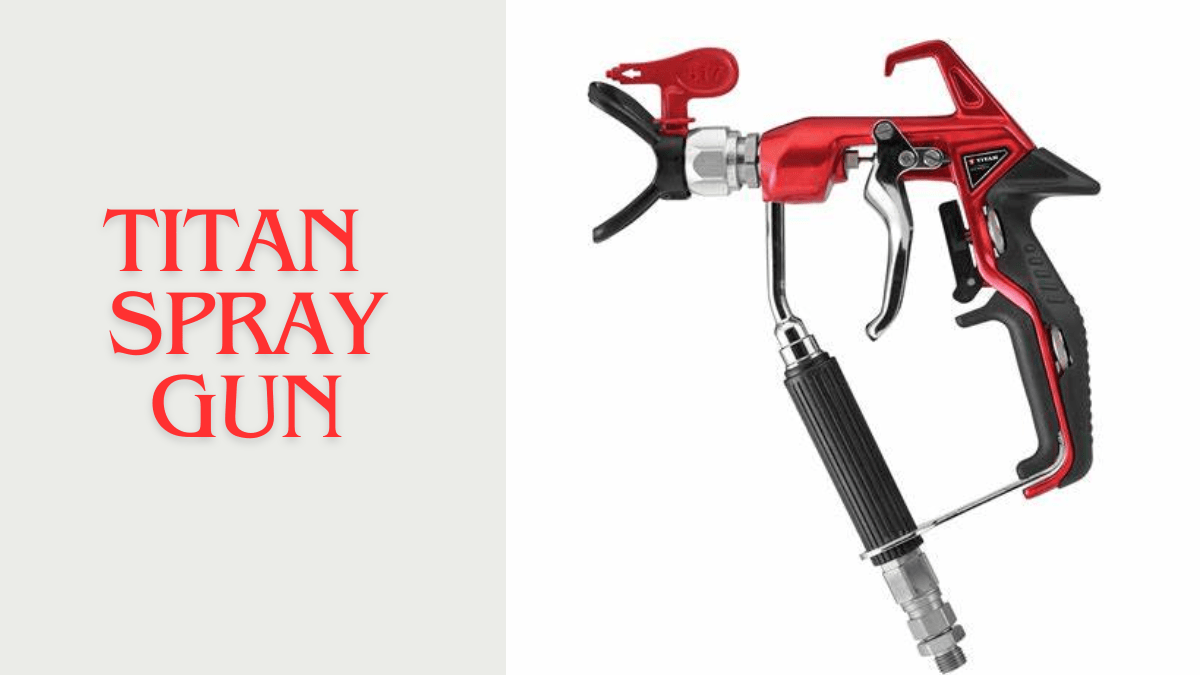If you’re a DIY diehard, the Titan spray gun might already be your go-to tool for all kinds of projects, from home improvement to automotive finishing. This versatile piece of equipment has become a staple in the crafting arsenal of many.
Yet, it’s not just about having the tool; How you care for it and the tweaks you make can bring its performance to a whole new level. This comprehensive post is designed to enhance your understanding and usage of your Titan spray gun to achieve professional-grade results.
A Brief Overview
Titan is no amateur in the world of paint application and surface preparation. With a legacy that dates back to the early 1970s, Titan tools are renowned for their sturdy build and reliability. The Titan spray gun, in particular, is a prodigious innovation that bridges the gap between precision and power in coatings technology.
Titan’s line of spray guns caters to a multitude of applications and materials, ranging from lacquers and stains to heavy-duty coatings like epoxy and elastomers. Their systems are prized for their versatility and ability to produce consistent, high-quality finishes.
Yet, owning a Titan spray gun is just the beginning. To truly maximize its potential, one needs to understand its intricacies and the role each component plays in delivering the perfect finish.
Understanding the Key Parts of a Titan Spray Gun
A Titan spray gun, like any other engineered system, is a sum of its parts. Each part is crucial to the overall performance and must be understood in isolation and how they work together.
Fluid Nozzle
The fluid nozzle is responsible for atomizing the paint or coating material, breaking it down into fine droplets for an even application. The size of your fluid nozzle will greatly affect the material flow and, consequently, the coverage and texture of your finish.
Expert tip: A larger fluid nozzle is perfect for thick materials like primer, while smaller nozzles are great for detailed work with fine finishes.
Air Cap
The air cap is where compressed air escapes and interacts with the material flow from the fluid nozzle. Its design dictates the spray pattern and air pressure, two critical variables that affect how the coating is distributed onto your work surface.
Expert tip: Fan air caps create a wide, fan-shaped pattern, while round caps produce a more concentrated, circular spray pattern.
Tip Seal
The tip seal, or packing, is a small but essential part that prevents the leaking of paint between the needle and the fluid nozzle. It should be checked regularly and replaced if you notice any inconsistencies in the spray pattern or material leakage.
Expert tip: Always use genuine Titan parts for replacement to ensure a perfect fit and finish.
Trigger and Needle Assembly
The trigger is the primary mechanism for controlling the flow of paint. When you pull the trigger, the needle is pushed back from the fluid nozzle to allow material to flow. The further you pull the trigger, the wider the material flow.
Expert tip: Keep the needle and its housing clean and free of dried paint to ensure smooth operation and prevent damage to parts.
Maintenance Tips for Prolonging the Life of Your Spray Gun
Proper maintenance is key to extending the life of your Titan spray gun and ensuring it delivers flawless performance.
Regular Cleaning
Ongoing projects can sometimes relegate cleaning to a mere afterthought. However, neglecting your spray gun’s cleanliness can result in dried paint and clogged components, reducing its effectiveness.
Expert tip: Clean your spray gun thoroughly after every use.
Lubrication
A well-lubricated spray gun operates smoothly and mitigates the risk of abrasive wear between moving parts.
Expert tip: Use only recommended lubricants and do not over-apply, as excess lubricant can mix with the paint and compromise the finish.
Inspection
Become accustomed to the look and feel of your Titan spray gun; this heightened familiarity will help you detect early signs of wear and tear.
Expert tip: Regularly inspect the condition of the nozzle and needle, as well as the gun’s exterior for any damage that may affect performance.
Storage
Proper storage of your spray gun is as important as using it correctly. A clean, dry, and temperature-stable environment prevents rusting, material buildup, and other damage to the gun’s parts.
Expert tip: Store your spray gun with the trigger locked open to relieve spring tension on the needle, extending its life.
Closing Thoughts
Maximizing your titan spray gun parts involves a dedicated investment of time, attention, and sometimes money. But the returns in terms of quality, versatility, and longevity are well worth it for any serious DIYer or professional. By grasping the fundamentals, keeping things tidy and well-lubricated, considering performance add-ons, and studying successful applications, you’ll be well on your way to being a titan 440 with your Titan. Remember, it’s more than a tool. It’s a craft and a mindset.








